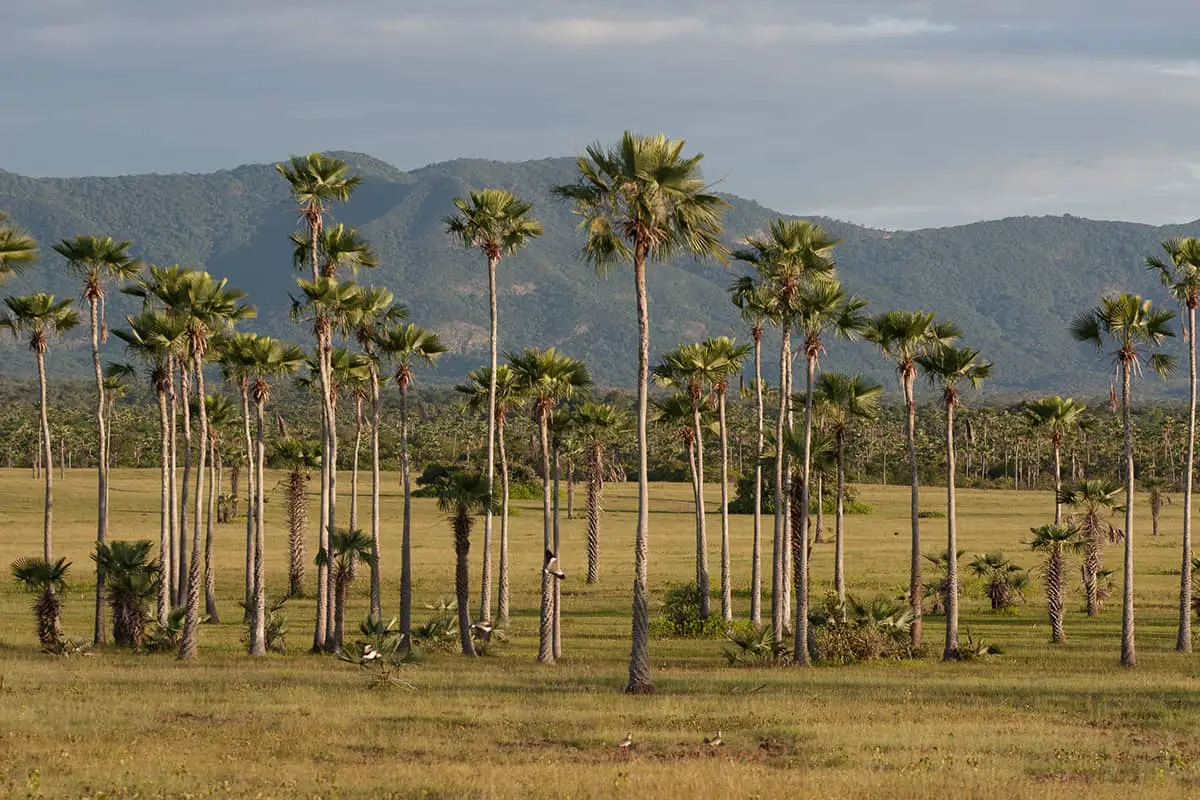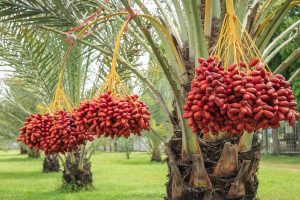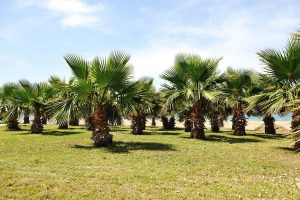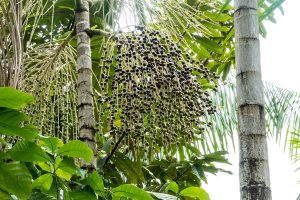There are over 2500 different species of palm trees, and these grow in the wild throughout many countries around the world. However, there is some debate concerning where the first palm trees grew natively.
Table of Contents
Where did Palm Trees Originate?
Most experts agree that the original home of the palm tree can be traced to different regions of the world, depending on the species of the specific palm tree.
Generally speaking, the roots of palm trees can be traced to areas of Northern Africa, Southeast Asia, India, and islands in the South Pacific. There have been fossils found in Africa which are examples of early palm trees, dating back to the Paleocene Period, around 60 million years ago.
There is also a lot of historical evidence from Ancient Egypt, which tells us that the Date Palm originated from this area, which occupies much of modern-day Iraq.
The spread of palm trees to other countries was a result of settlers, animals, and trade.
Which Palm Trees are Native to the United States?
Of over 2500 palm species that are known to exist, just 13 of these are native to the continental United States, and a further 19 are native to Hawaii.
Continental US Native Palms:
The 13 species of palm which are native to the continental US are:
- California Fan Palm (Washingtonia Faliera)
- Mexican Palm (Sabal Mexicana)
- Dwarf Palmetto (Sabal Minor)
- Florida Thatch Palm (Thrinax Radiata)
- Everglades Palm/Paurotis Palm (Acoelorrhaphe Wrightii)
- Florida Silver Palm (Coccothrinax Argentata)
- Buccaneer Palm/Florida Cherry Palm (Pxeudophoenix Sargentii)
- Scrub Palm (Sabal Etonia)
- Miami Palm (Sabal Miamiensis)
- Cabbage Palmetto (Sabal Palmetto)
- Texas Palmetto (Sabal Brazoriensis)
- Needle Palm (Rhapidophyllum Hystrix)
- Florida Royal Palm (Roystonea Regia)
Hawaiian Native Palms:
There are 19 species of palm native to the Hawaiian islands, and these all belong to the Pritchardia genus. The three most common palms found in Hawaii are Pritchardia Martii, Pritchardia Remota, and Pritchardia Hillebrandii.
Which US States are Palm Trees Native to?
California

Palm trees are an iconic symbol of California, yet interestingly there’s only one species of palm which is actually native to this state. The California Fan Palm (Washingtonia filifera), hails from the Mojave Desert and the Colorado Desert. There are now more than 200 species of palms growing in California, with the most common being the Mexican Fan Palm, the Queen Palm, and the Date Palm.
The Mexican Fan Palm is believed to have the biggest population of non-native palms in California. These are believed to have first been imported into the US by settler monks in the 1700’s. They planted palms because of the ornamental significance the plants held in connection with Palm Sunday.
It wasn’t until the 1930’s that Mexican Fan Palms became the predominant species of palm in the state. During this time, over 40,000 Mexican Fan Palms were imported from Mexico and planted in LA as a part of the project to improve the aesthetic of the city in preparation for the 1932 Olympic Games.
Florida

Florida is home to more palm trees than any other state in the US, including both native and non-native species, with an estimated total of 13,000 palms. The climate in Florida is conducive to growing many types of tropical palm trees because the temperature does not get too cold, and there is consistent heavy rainfall.
There are 13 species of palm that are believed to be native to Florida, though some of these are contested as there is some evidence that they may be endemic to the South Pacific.
The 13 palms known as native to Florida are Dwarf palmetto, Needle palm, Florida thatch palm, Florida royal palm, Scrub palmetto, Alexander palm tree, Florida silver palm, Saw palmetto, Sylvester palm, Keys thatch palm, Paurotis palm, Cabbage palm.
Texas
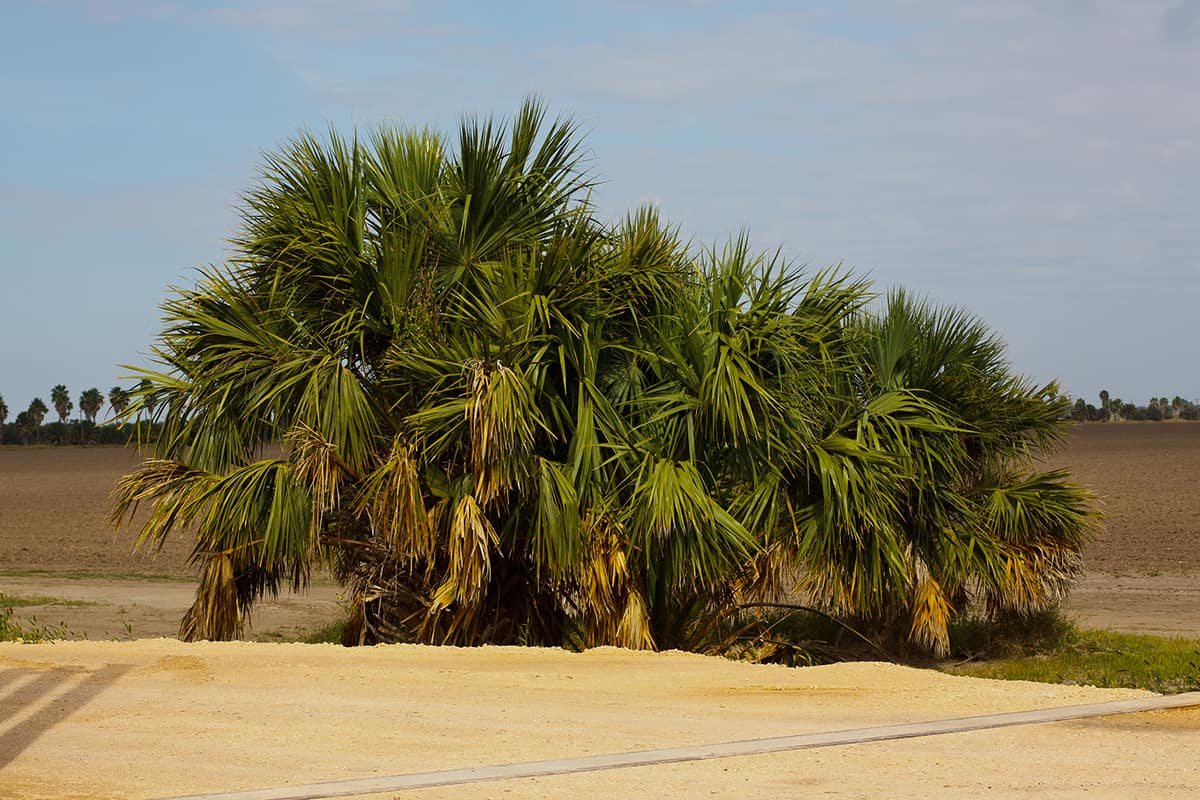
Texas is another state where palm trees grow in abundance. Palms native to this state include the Texas palmetto (Sabal Mexicana), also commonly known as the Mexican Fan Palm, which was especially prolific in the Rio Grande Valley before much of this area was cleared.
It is now widespread across Texas but is not heavily populated. This large tree reaches up to 50 feet in height, and produces large, fan-shaped fronds.
Louisiana
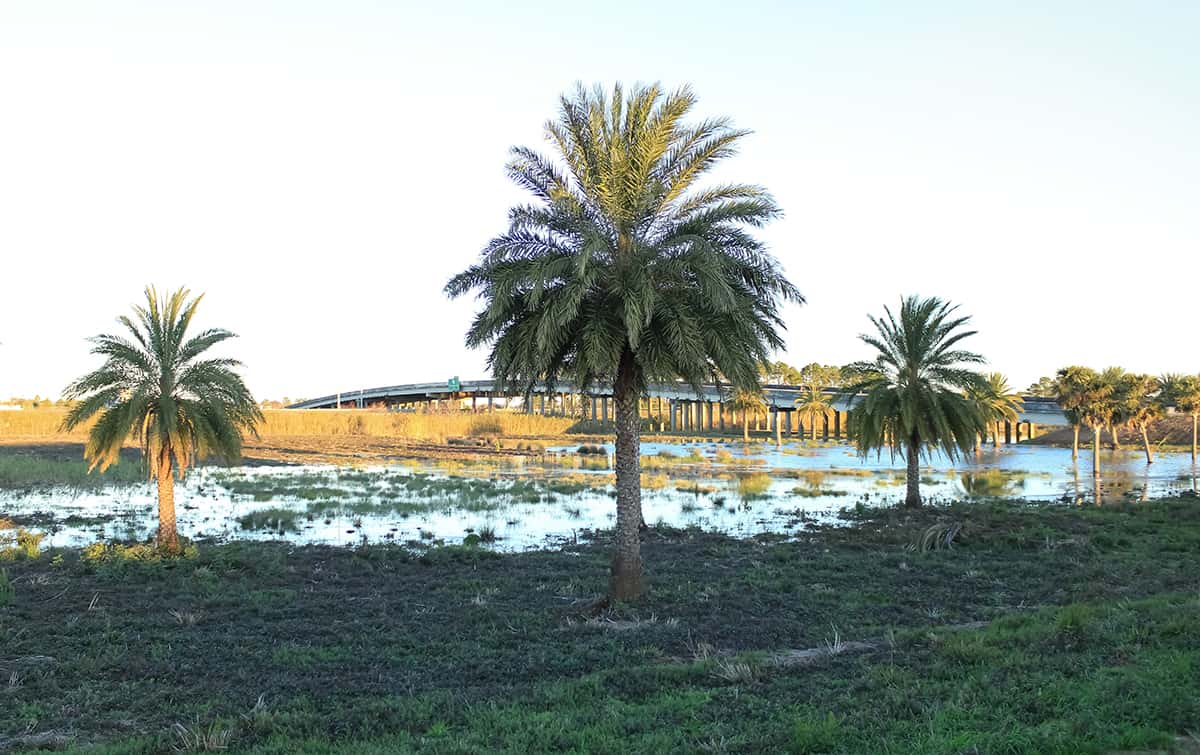
Louisiana is home to a large proportion of palm trees, with at least 19 different species identified as growing in this state. The Dwarf Palmetto (Sabal Minor), is one type of palm which is native to Louisiana.
It has a shrub-like look because it usually has no trunk, and grows to maximum heights of just 8 feet. This is a slow-growing palm, producing fan-shaped fronds.
Georgia
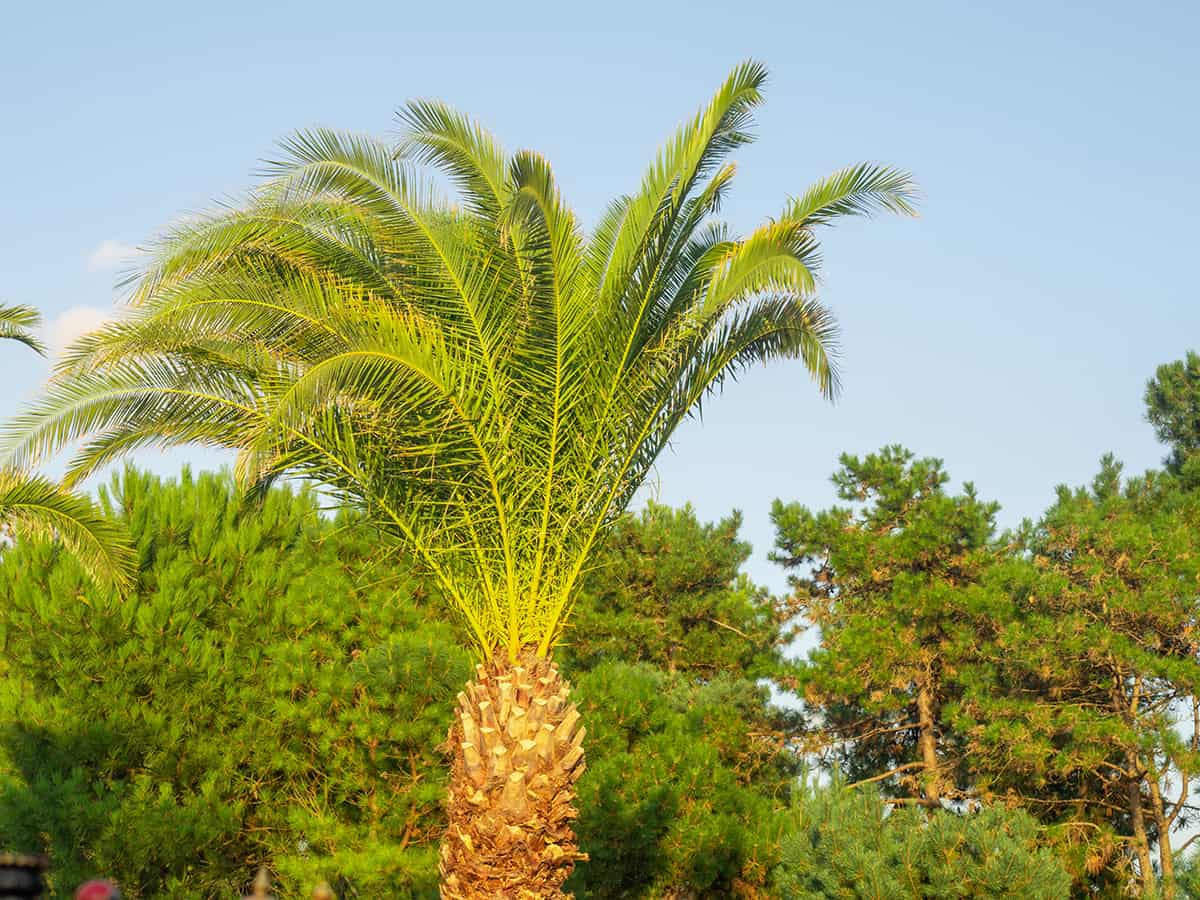
There are several species of palms native to the state of Georgia, and only one of them takes the form of a tree. This is the Cabbage Palmetto (Sabal Palmetto), and it grows up to 60 feet tall, most commonly in the coastal plains.
Other palms native to Georgia lack trunks and therefore appear more like shrubs, and these include the Needle Palm (Rhapidophyllum Hystrix) and the Dwarf Palmetto (Sabal Minor).
Which Palm Trees are Native to Europe?
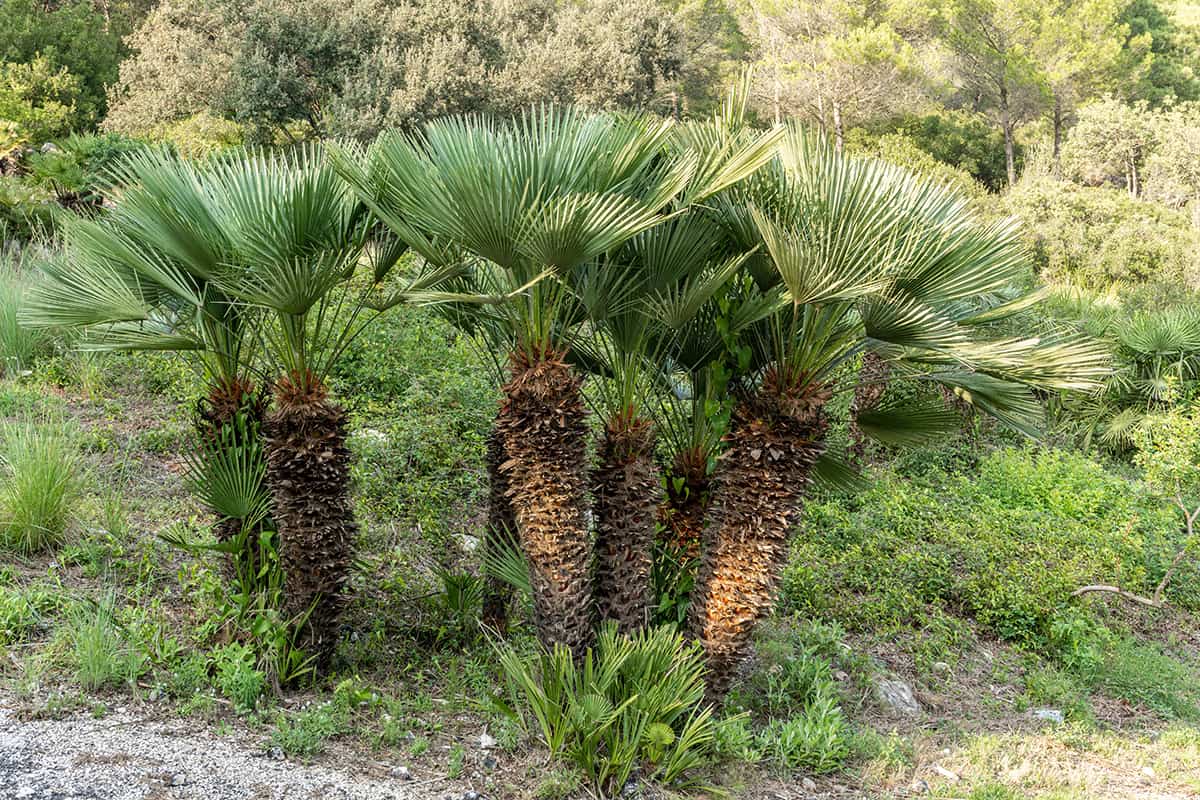
Europe is not known for its palm trees because it can experience cold winters, however there are a small number of palm trees that are hardy and able to survive in this type of climate.
The European Fan Palm (Chamaerops humilis) is one of the few trees which is native to Europe. This palm grows in the wild in both the south of Spain and south of France, as well as in parts of Portugal, Monaca, and Italy.
This palm is one of the hardiest palms in existence, suitable for growing in USDA hardiness zones 8 through 11. It takes the form of a large shrub, growing to heights of up to 15 feet, with a spread of up to 10 feet.
The second palm believed to be native to Europe is the Cretan Date Palm (Phoenix theophrasti). This species hails from the region around the eastern Mediterranean, most notably growing in Crete, Greece, and Turkey. As you might expect from its name, this palm produces date fruits, but these are bitter tasting and aren’t favored for eating.
A large proportion of Cretan Date Palms believed to total more than 5000, can be found in the Vai Palm Forest, which is known to be the only palm tree forest on the whole continent. It is in an eastern region of Crete called Lassithi and is located along a beach. Although these palms are now considered to be native to Crete, many argue that the forest was planted by Arabians or Egyptians while conquering the island long ago.
Where are Palm Trees Commonly Found?
A large proportion of the world’s palms are situated in Neotropical rainforests in Central and South America, including the Amazon rainforest.
This is believed to be because the hot, wet, and humid conditions of the rainforests are more suitable for growing palms compared to the drier forests of Africa and Asia. Palms that are native to the Americas and are commonly found in the rainforests here are the Colombian Wax Palm, the Cabbage Heart Palm, the Chilean Wine Palm, and the Andean Wax Palm.
In Africa and the Middle East, common palm trees include the Date Palm, the Bottle Palm, and Spindle Palm.
In Asia, the Chinese Fan Palm takes the title for the most common type of palm tree, but the Fountain Palm comes a close second.
